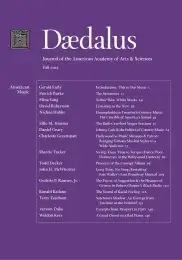Swing: From Time to Torque (Dance Floor Democracy at the Hollywood Canteen)
The Hollywood Canteen (1942–1945) was the most famous of the USO and USO-like patriotic nightclubs where civilian hostesses jitterbugged with enlisted men of the Allied Nations during World War II. It is also the subject of much U.S. national nostalgia about the “Good War” and “Greatest Generation.” Drawing from oral histories with civilian volunteers and military guests who danced at the Hollywood Canteen, this article focuses on the ways that interviewees navigated the forceful narrative terrain of national nostalgia, sometimes supporting it, sometimes pulling away from or pushing it in critical ways, and usually a little of each. This article posits a new interpretative method for analyzing struggles over “democracy” for jazz and swing studies through a focus on “torque” that brings together oral history, improvisation studies, and dance studies to bear on engaging interviewees’ embodied narratives on ideologically loaded ground, improvising on the past in the present.
There is No Color Line at This Coast Canteen
–Chicago Defender, January 30, 1943
What does it mean to have a body that provides an institution with diversity?
–Sara Ahmed, On Being Included1
Democracy! That’s what it means, Slim! Everybody equal. Like tonight! All them big shots, listening to little shots like me, and being friendly!
–Sgt. Brooklyn Nolan, Hollywood Canteen (1944)
The Hollywood Canteen (October 3, 1942– November 22, 1945) was the most famous of the thousands of USO-like nightclubs where civilians entertained military personnel during World War II. Patterned after New York’s Stage Door Canteen, the club featured volunteers who hailed mostly from the guild and unions of the motion picture industry, including glamorous stars like Rita Hayworth, Deanna Durbin, and Hedy LaMarr. Bette Davis was the president of the Hollywood Canteen . . .
